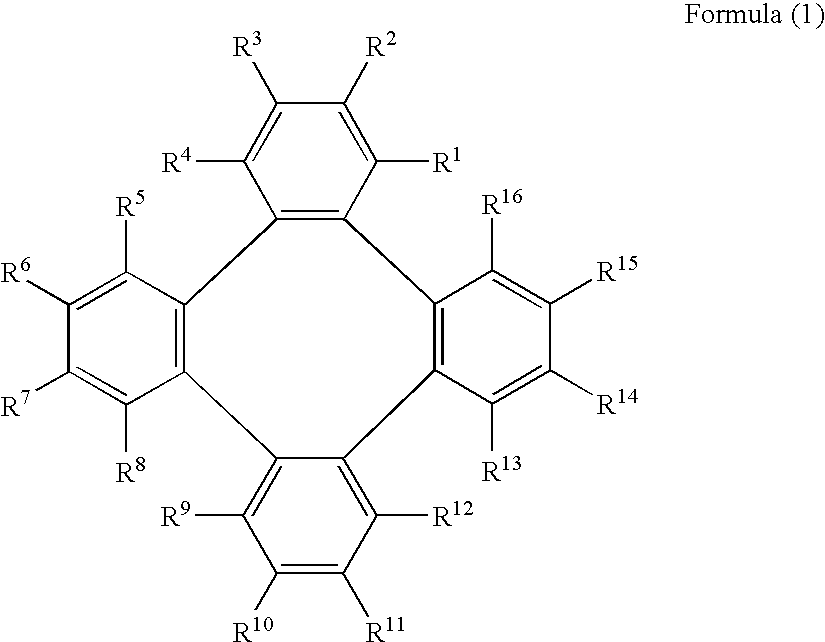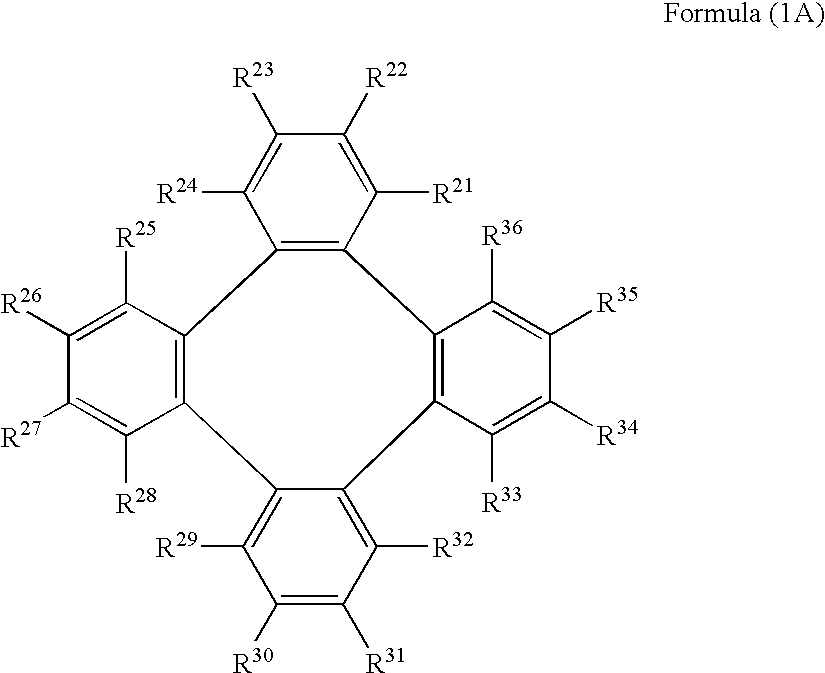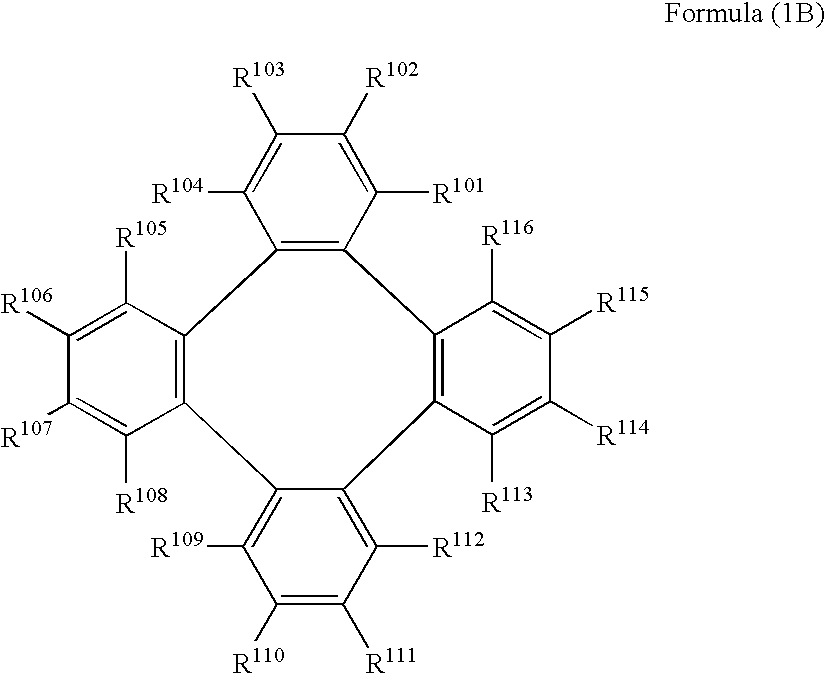Organic electroluminescent device
a technology of electroluminescent devices and organic materials, which is applied in the direction of solid-state devices, discharge tubes/lamp details, natural mineral layered products, etc., can solve the problems of device lack of satisfactory luminous efficiency and disadvantageous efficiency of compound energy transfer to dopants
- Summary
- Abstract
- Description
- Claims
- Application Information
AI Technical Summary
Problems solved by technology
Method used
Image
Examples
example 1
[0152]A washed ITO substrate was placed in a depositing apparatus. As a hole transporting material, α-NPD (N,N′-diphenyl-N,N′-di(α-naphthyl)benzidine) was deposited in a thickness of 50 nm on the substrate, then Compound (1-4) and Compound a were co-deposited thereon with a ratio (by mass) of 17:1 in a thickness of 36 nm, followed by depositing Azole compound b thereon in a thickness of 36 nm. A patterned mask (mask providing a light-emitting area of 4 mm×5 mm) was provided on the organic thin layers, and after depositing lithium fluoride in a thickness of about 1 nm in the depositing apparatus, aluminum was deposited in a thickness of about 200 nm thereon, to prepare a luminescent device. A DC constant voltage was applied to the resultant EL device, using Source Measure Unit type 2400 (trade name), manufactured by Toyo Tekunika, to emit light. The luminance of the thus-emitted light was measured, using a luminance meter, BM-8 (trade name) manufactured by Topkon, and the wavelength ...
example 2
[0157]A device was prepared and evaluated in the same manner as in Example 1, except that instead of the Compound (1-4), a mixture of Compound (1-4) and Compound c at a ratio by mass of 1:1 was used. As a result, a green light emission with a chromaticity value of (0.28, 0.62) was obtained. The external quantum efficiency of the device was 12.1%.
[0158]The device durability of this device was evaluated at an initial luminance of 2,000 cd / m2 and a constant current value. As a result, the luminance half time of the device was about 620 hours.
example 3
[0159]A device was prepared and evaluated in the same manner as in Example 1, except that instead of the Compound (1-4), a mixture of Compound (1-4) and Compound d at a ratio by mass of 1:1 was used. As a result, a green light emission with a chromaticity value of (0.28, 0.62) was obtained. The external quantum efficiency of the device was 9.1%.
[0160]The device durability of this device was evaluated at an initial luminance of 2,000 cd / m2 and a constant current value. As a result, the luminance half time of the device was about 780 hours.
PUM
| Property | Measurement | Unit |
|---|---|---|
| phosphorescence quantum yield | aaaaa | aaaaa |
| phosphorescence quantum yield | aaaaa | aaaaa |
| phosphorescence quantum yield | aaaaa | aaaaa |
Abstract
Description
Claims
Application Information
 Login to View More
Login to View More - R&D
- Intellectual Property
- Life Sciences
- Materials
- Tech Scout
- Unparalleled Data Quality
- Higher Quality Content
- 60% Fewer Hallucinations
Browse by: Latest US Patents, China's latest patents, Technical Efficacy Thesaurus, Application Domain, Technology Topic, Popular Technical Reports.
© 2025 PatSnap. All rights reserved.Legal|Privacy policy|Modern Slavery Act Transparency Statement|Sitemap|About US| Contact US: help@patsnap.com



